No, Slim Pickens wasn't there (where the hell is Major Kong?)—and with the camera industry in a slump, not a whole lot else was either. We've seen the first two major camera introductions of 2014 in the Samsung NX30 and Nikon's new introductory level DSLR, the D3300 ($650 with lens). The latter appears to be a significant upgrade over the outgoing D3200, although claiming a "new sensor" might be a bit of a stretch...it appears to be the same sensor as was in the D3200 only without an anti-aliasing filter.
Slower, less expensive Nikon 35mm
Biggest news for us enthusiasts in in serious lenses, and there are some beauties. Nice that Nikon has finally fleshed out its line of ƒ/1.8G primes with an FX 35mm. The AF-S Nikkor 35mm ƒ/1.8G for FX has an "ED" on the lens, while the AF-S Nikkor 35mm ƒ/1.8G for DX has a "DX" on the lens barrel. That won't cause any confusion, I bet. (Never mind that non-Nikon-shooters are dim on the designations DX and FX, but let's not get me started.) But the lens itself looks nice—large but light, with premium construction of no less than 11 elements.
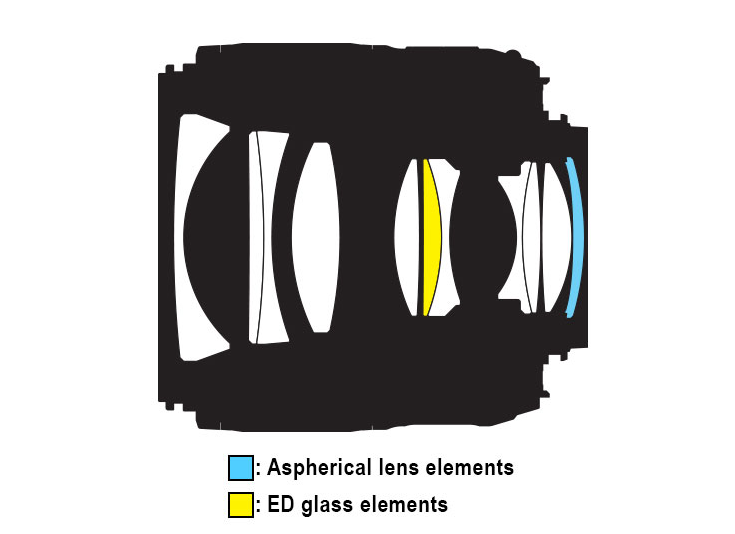 Cross section of the new AF-S Nikkor 35mm ƒ/1.8G ED
Cross section of the new AF-S Nikkor 35mm ƒ/1.8G ED
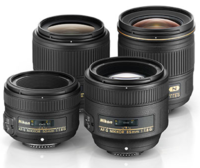 Unfortunately the price is rather high at $600, but one glance at the cross section tells you you're getting your money's worth. Nikon shooters who like primes can now create a complete matching four-lens outfit from 28mm to 85mm (right), the focal length range that 95% of general-purpose photography requires, in the relatively economical, relatively light ƒ/1.8 lenses. A good thing.
Unfortunately the price is rather high at $600, but one glance at the cross section tells you you're getting your money's worth. Nikon shooters who like primes can now create a complete matching four-lens outfit from 28mm to 85mm (right), the focal length range that 95% of general-purpose photography requires, in the relatively economical, relatively light ƒ/1.8 lenses. A good thing.
On the not-quite-as-good side, Nikon has chosen not to compete with Canon's decision to put IS in its short primes. You can get a 35mm ƒ/2 EF lens from Canon for that same $600, but Canon will throw its very good image stabilization in to boot. Not trivial (says this low-light shooter). (Note that ƒ/1.8 and ƒ/2 are as close as makes no never mind.)
Panasonic-Leica 42.5mm
The big news in Micro 4/3 is the arrival of the awaited Leica DG Nocticron 42.5mm ƒ/1.2 ASPH. (85mm-e) from Panasonic. Premium metal barrel construction, premium ultra-fast ƒ/1.2 maximum aperture, and premium Leica branding add up to a premium price—a rather breathtaking $1,600. But price sensitivity is an individual thing, and those with less scratch but great taste can always get the Olympus 45mm ƒ/1.8, one of the stellar bargains in all cameradom at $400 (and which I recently learned is OEM'd for Olympus by none other than Konica-Minolta, which still makes lenses for other companies, including, apparently, quite a few Micro 4/3 lenses).
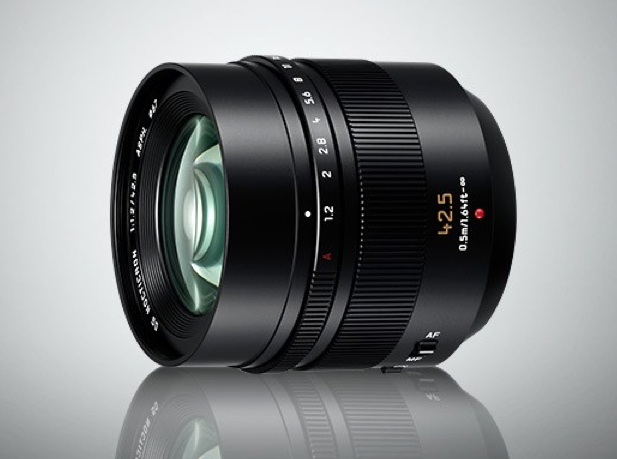
But getting back to the DG Nocticron (a name that will seem addlepated to longtime Leicaphiles, to whom 'Cron = ƒ/2): Panasonic threw everything it has at this. Along with the "mostly metal" construction it has AF, in-lens image stabilization (Panasonic's is called Power O.I.S.), and a whopping 14 elements (to put you in context, short teles can give superb performance with five, albeit not with such high speed). This includes two aspherical elements, one extra-low dispersion (ED) element, and one element of ultra high refractive index (UHR) glass.
Artistically I wonder about the wisdom of super-sharp lenses for portraiture—many contemporary short teles are too sharp for pleasing portraits in my opinion. Seems to me if you want to shoot the bride and make her happy you'd be better off with something like Nikon's new 58mm ƒ/1.4 on an APS-C DSLR, which is very close in terms of angle of view, speed, and price. But super razory sharpness is what people want, and it appears they're going to get it with this beauty. I look forward to the happy deconstruction of IQ in forums hither and yon.
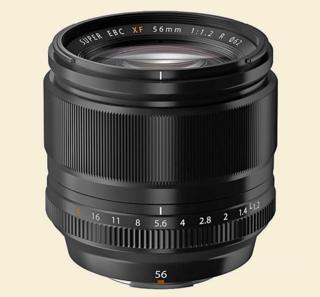
Big, brawny claims
If you've noticed a trend (slightly longer than 50mm, high speed, lots of elements, premium price), you might be happy to learn that Fuji X shooters aren't being left out. Continuing to add to that well-liked lens line right on schedule, Fujifilm has introduced the Fujinon XF 56mm ƒ/1.2 R. Sporting the same sweet look 'n' feel as the rest of the XF lenses, the 11-element 56mm has one element that is aspherical on both sides plus two extra-low dispersion elements. Fuji claims that this lens will have better image quality than lenses with the same angle of view on full-frame cameras! Sounds to me like somebody doesn't have a full frame camera, hmm?...A7r envy maybe? Call me cynical. However, Fuji X fans are probably not having a hard time believing it's going to be true. The lens costs $1,000, which is enough to brag about but still a far hike better than the new Micro 4/3 85mm-e.
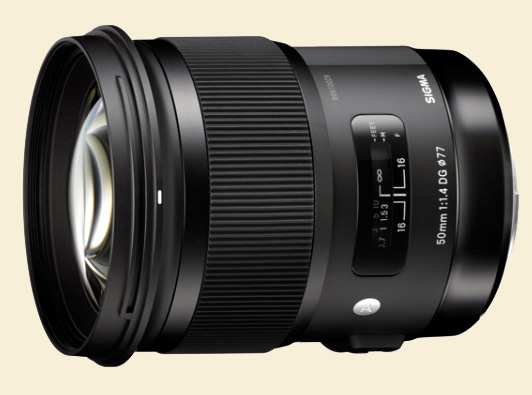 Another top-drawer Sigma
Another top-drawer Sigma
Last on our list today (we're being selective—of course there were other products intro'd at CES, including—this will shock you—some new digicams a.k.a. point-and-shoots) is another lens in Sigma's flagship "Art" series, the Sigma 50mm ƒ/1.4 DG HSM | Art (not linked as it's not yet available for pre-order. And there's that "DG" again—nomenclature is a thorny thicket). Sigma's other recent all-new balls-out effort in the Art line, the 35mm ƒ/1.4 DG HSM | Art, has been unusually well received by photographers—I hear good reports everywhere. The all-new 50mm could be a "poor man's OTUS"—the reference is to Zeiss's recent $4,000 assault on the state of the art. Another lens of premium construction, Sigma's, like Zeiss's, also departs significantly from classic Gaussian design. This one will be fun to track too, as it makes its way into working camera bags. Which it doubtless will, given a competitive price (not yet announced).
Hey, actually I kinda like light shows like this CES...less work for me! Yet still fun. Some awfully nice stuff here, you must admit.
Mike
(Thanks to Kevin Purcell)
Original contents copyright 2014 by Michael C. Johnston and/or the bylined author. All Rights Reserved. Links in this post may be to our affiliates; sales through affiliate links may benefit this site.
(To see all the comments, click on the "Comments" link below.)
Featured Comments from:
Dennis: "And now you have Sony...they've updated the NEX-3n and called it the Alpha A5000. It's probably good that they're getting rid of the NEX name and emphasizing compatibility. But now you have the DSLR-styled A3000 and the rangefinder-styled A5000. And don't put too much on the '5'...it has a moderate-res LCD and no option for an add-on EVF—it's an entry level camera. Now, for fun, head on over to Sony's website, where you can find the A3000 listed under 'Alpha DSLRs' (Sony's DSLRs aren't even technically DSLRs, but the A3000 isn't even an SLT and doesn't use Sony's DSLR mount lenses without an adapter) and the A5000 listed under 'Alpha NEX.' Apparently, Sony is classifying cameras by shape, and NEX is no longer a product name (OK, there are still a few of them, but the A7 and A7r are also there)—but a shape? It's quite plain to see that Thom's claim that Sony is 'throwing spaghetti at the wall' isn't hyperbole."
Mike replies: Thorny thicket...thorny thicket.
Ned: "One of my all time favorite movies. Take a look at the low angle shots of General Ripper when he is sitting at his desk with the cigar in his mouth:
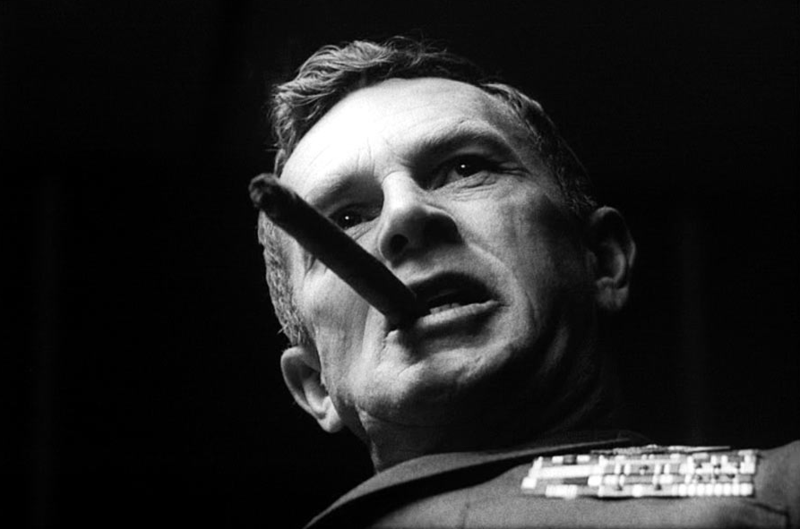
"The lighting on his face as he is clinching his cigar in his mouth is fantastic. Great dramatic portrait lighting."
Mike replies: Stanley Kubrick was a photographer before he was a director. A Leica shooter, no less.








